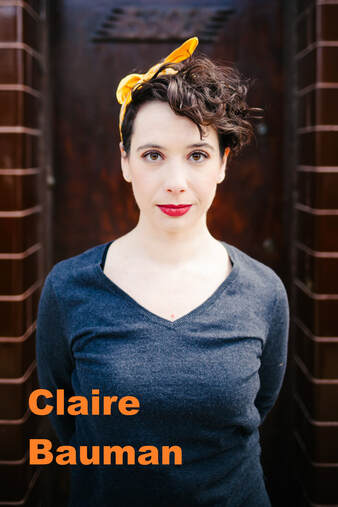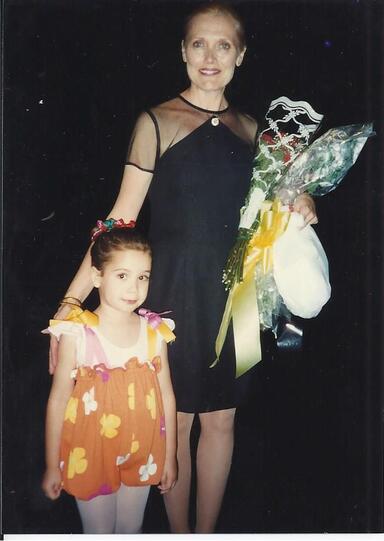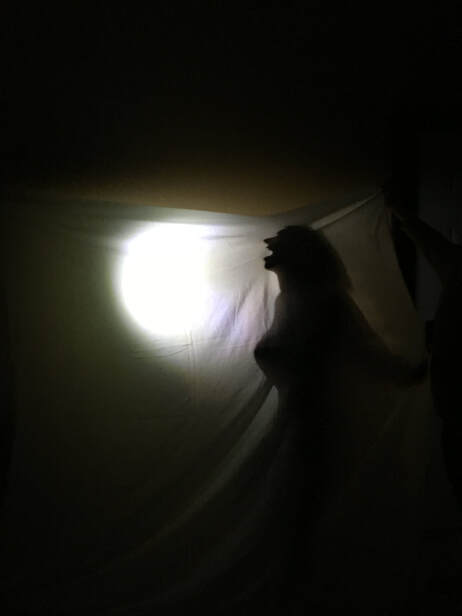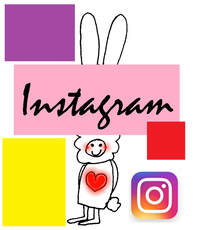|
I met Claire Bauman at Enrich Chicago workshops, where we learned how to update ourselves for an anti-racism initiative in Chicago art professions. We had the opportunity to learn about each other (she knits for her family members!) and I was interested in knowing more about her theatre directing along with her ballet and dancing experiences. "Just technique is stiff and academic. Expression alone is chaotic. But, together, they are exquisite." Bauman compares her art theory with "form" and "structure". I think that if dancing is cooking, "form" is the ingredients (pumpkin, flour, & spices...) and "structure" is the recipe. What can we cook with pumpkins, flour, & spices? Pumpkin pie? Or Pumpkin tempura? With the same ingredients, the outcomes can vary depending on how we approach them. The performer takes their ingredients (emotions, academia, & experience), and uses them in a performance flavored with the nuances of how each were prepared. The outcome becomes a tragedy or comedy. Her conversation reminded me of my recent Instagram TV guest, Jen Karetnick, who said, "Everyone gets the same ingredients & recipes, but the cook must tweak it for the best taste. It is same as writing poetry". "It may be easy to write off an arm gesture as icing on the cake, but I see such movement as an inextricable aspect of choreography that transforms simple dance steps into a form that can be manipulated to carry meaning." Bauman is my first guest outside the writing community. But I love to realize again how art and creativity connect different professions. PERSONAL MUSINGS ON FORM AND STRUCTURE By Claire Bauman (she/her/hers) Every ballet class begins with pliés. As the knees bend to a demi plié, the arms float to first position, and the head tilts, gazing at the palm. As the knees extend, arms open to second position, and the head follows the hand out. This exercise not only begins class, but also forms the foundation of most balletic movement. But it is not just the mechanics of the movement that matter. The épaulment, or positioning of the shoulders, head, and neck, and the quality of the movement are essential in creating subtle, twisting lines, a sense of effortlessness and grace, and depth of emotion in any movement. Moments like the Black Swan’s 36 fouettes are easily memorable and spectacular even, but what is Swan Lake without the iconic floating, beating arms of the swan corps de ballet? It may be easy to write off an arm gesture as icing on the cake, but I see such movement as an inextricable aspect of choreography that transforms simple dance steps into a form that can be manipulated to carry meaning. My interest in theatre began with ballet. The story goes that I begged my mom to allow me to take extra ballet classes in preparation for the annual exam required to pass on to the next level of training when I was in kindergarten. Throughout my childhood, my teachers taught me to point my feet properly through reminders to avoid “dead fish,” to expand and lift through my chest by feeling the sun shining onto it, and to elongate through my neck by imagining myself wearing a crown. This imagery allowed me to tap into the creative and emotional qualities of ballet. I didn’t have the highest grand battements or the most pirouettes, but I stuck with ballet for as long as I did because the rigor of the technique gave me an emotional outlet to explore storytelling. I loved both the technique and the expression because they needed each other to be a complete artistic form. Just technique is stiff and academic. Expression alone is chaotic. But, together, they are exquisite. I would not work the way I do as a theatre maker if not for ballet. Whether I am directing, devising, or choreographing, I seek to create meaning through form: the shape, appearance, or quality of something. I build images, metaphor, and juxtaposition to construct meaning and evoke visceral responses in audiences. If form is the essential construction of an entity, I believe those inherent qualities can elicit emotion. Let’s return to the ballet. Throughout Act II of Giselle, it’s a common stylistic, or formal choice, that Giselle and the Willis (maidens who have died before their wedding day) dance with their eyes downcast. The eyes downcast is part of the form of the steps for these characters, creating an eerie aura of grief. The Willis would not be half as powerful without this choice. I do not think form is synonymous with structure (the organization of things). But structure is an important component in creating meaning, and another study ingrained this perspective in me. I chose to take Latin in high school (following after my brother). I loved it because it also uses form and structure to create meaning; in this case, through cases (pardon the pun). Cases are like verb conjugations but for nouns and adjectives. Latin uses cases because it does not require word order. So the ending of the word tied it to other words rather than its location in a sentence. And by changing the case, you change the form, and therefore, the meaning of the word. With a different case, the word “painting” becomes “to the painting” or “of the painting.” Words and their cases could have their meaning further manipulated through rhetorical devices. This leads us from form to structure, from the manipulation of the thing itself (words, in this example) to the manipulation of their organization. Rhetorical devices are the structures that elevate language into poetry, layering a visual and auditory meaning onto the simple definitions of the words. Alliteration is a good example, since we also use it in English, and such repetition of consonant sounds can add to an emotional response. Because of the use of cases and the fluidity with which words could be placed in a sentence, Latin gave us other devices like chiasmus, a mirroring device that placed words in an “a b b a” pattern. Another favorite is caesura, a word break in a phrase. This makes Latin poetry even more powerful through its visual structure. I fixate on form and structure in theatre because I think they are often overlooked as the containers of meaning which can evoke emotion in an audience. And form and structure are a choice. Choice is where my artist perspective and inquiry emerge from. So often, in art and society, we forget that everything is constructed, and anything that is built can be built anew through different choices. Antonin Artaud hones in on the power of theatre to challenge social inequity in his essays collected in Theatre and Its Double. He laments that, “our theatre never goes so far as to ask whether this social and moral system might not by chance be iniquitous.” I want theatre to be more than just a story that happens onstage. Form can evoke a reaction more powerful and subliminal within an audience than the combined definitions of words spoken by a character that feels relatable. I hope such an emotional connection can challenge how people view themselves in space and in society. I deeply believe that movement, form, and structure hold the power to change systems and people and that theatre is an essential tool in imagining and creating such change. Claire Bauman a director and choreographer who creates theatre, dance theatre, and performance art through devising practices and ensemble-based collaboration. She approaches her self-produced and devised work with an interdisciplinary and feminist lense. She has worked with Red Tape Theatre, Interrobang Theatre Project, Walkabout Theater, Rhinofest, Broken Nose Collective, and Chicago Theatre Marathon. She is the Grants Manager and an ensemble member with Red Tape Theatre and an Institutional Giving Consultant with Artistic Fundraising Group. Claire has participated in DirectorsLabChicago, Stage Directors and Choreographers Foundation Observership Program, and Hangar Theatre's Directing Apprenticeship. She graduated from Vassar College and further trained at the Moscow Art Theater School. You may also like...To read the full essay, click on the picture. Comments are closed.
|
Archives
July 2024
|
フジハブ
Welcome to FUJI HUB: Waystation to Poetry, Art, & Translation. This is not your final destination. There are many links to other websites here, so please explore them!
Welcome to FUJI HUB: Waystation to Poetry, Art, & Translation. This is not your final destination. There are many links to other websites here, so please explore them!
What are you looking for?
FUJI HUB Directory
Popular Sites:
Gallery of Graphic Poems
Working On Gallery
(Monthly New Article by Writers & Artists)
About Naoko Fujimoto
Contact
Naoko Fujimoto Copyright © 2024
FUJI HUB Directory
Popular Sites:
Gallery of Graphic Poems
Working On Gallery
(Monthly New Article by Writers & Artists)
About Naoko Fujimoto
Contact
Naoko Fujimoto Copyright © 2024






